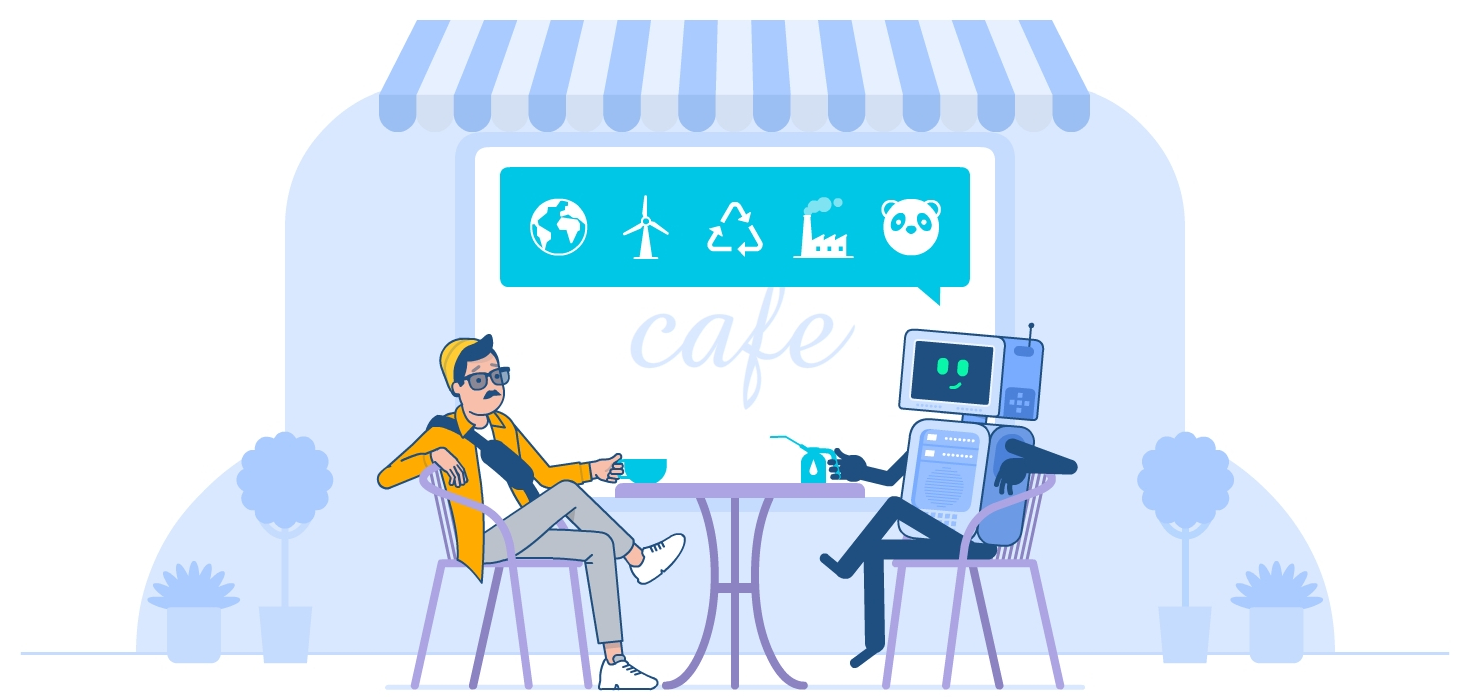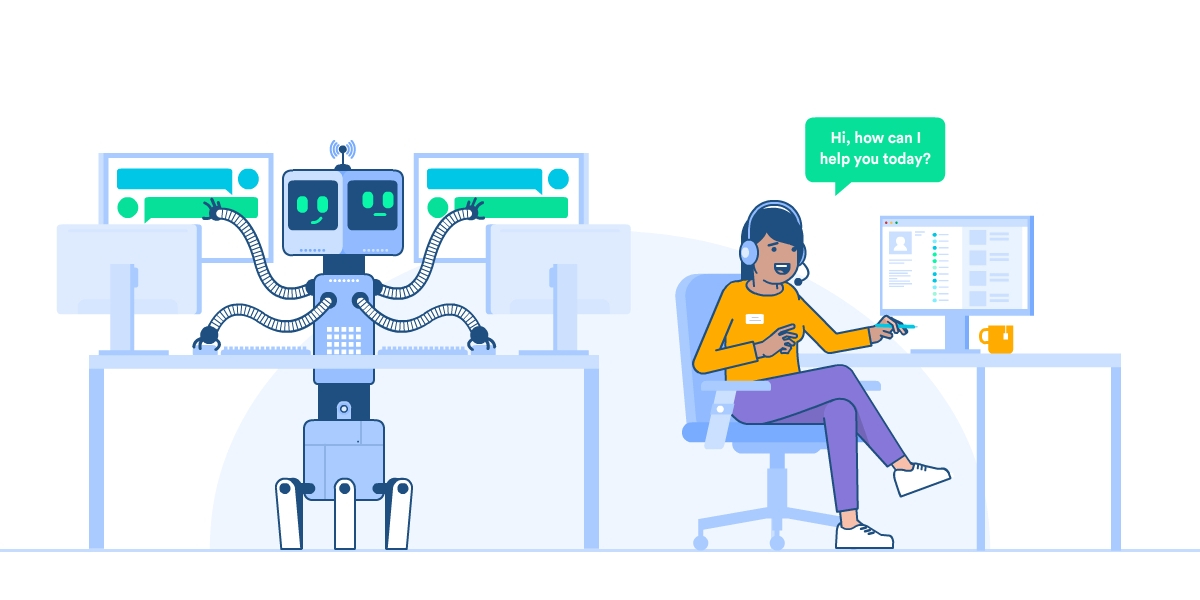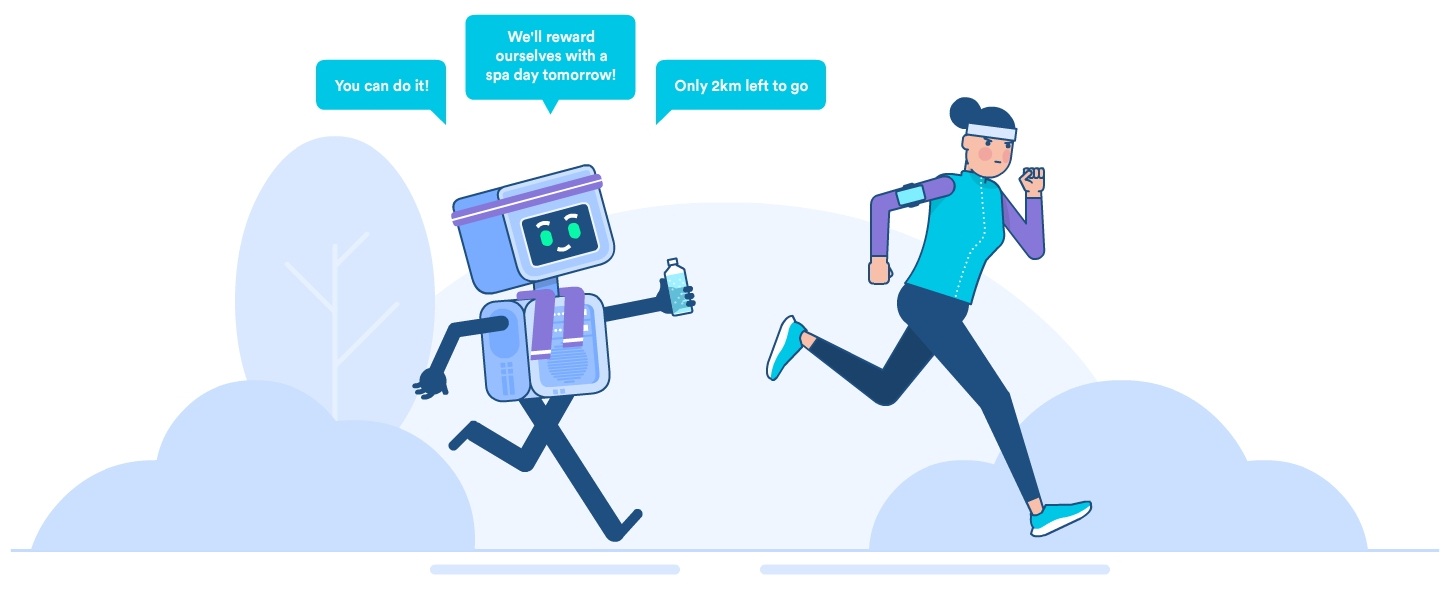
As AI continues to mature, it’s finding its way into more and more industries looking to innovate to help them achieve their goals. The third sector has emerged as a perhaps surprising early leader in this race, but it's for good reason: almost two-thirds of AI adopters report that AI technologies enable their organisations to move ahead of the competition.
The rising importance of AI
Artificial intelligence covers a broad range of technologies from natural language understanding, smart assistants and chatbots to machine learning and neural networks. We’ve seen AI permeate throughout all industries, but the rapid embrace of AI in the non-profit sector has drawn our attention recently. The ways AI and smart automation are being adopted and deployed are manifold; use cases include effecting behaviour change, planning and improving service delivery, audience engagement and operational efficiency. Through our work we’ve identified five key AI trends charities should be aware of.

Trend 1: Hyper-personalisation
Audiences have always responded better to personalised experiences but delivering these efficiently at scale has been an elusive task. by deploying AI we’re moving towards delivering hyper-personalised experiences to individuals using a combination of unique user and general data. As a consequence industry is moving away from demographics-based approaches, which use basic, aggregated data to silo people into groups or segments.
Responding rapidly to world events has been proven as an effective method of capitalising on public sentiment and driving reach and donations for charities, but can be a labour intensive task to accomplish. Data crunchers CivisAnalytics, in partnership with DataKind, developed an algorithm which sweeps 44 news outlets for stories related to refugees and immigration, which they can then quickly turn into campaign materials to their audiences. They used natural language processing to identify topics and sentiment within the articles, then quickly inform the communications teams to ensure they get ahead of stories and events. Features like this allow organisations to respond quickly and effectively update and engage with their audiences.
Optimising content can drive efficiencies in advertising and campaign spend, but this is an evergreen challenge for humans to accomplish at scale. Online campaign fundraising tool Persado cross-references campaign content with over 1 million tagged and scored words, phrases, and images and tracks their performance. It uses this data to generate insights into what campaign wording and collateral works best for specific audiences, leading charities like charity:water to significantly optimise their Facebook campaigns’ creative execution, resulting in a 32% conversion rate uplift.
To help people plan for change, organisations need to listen and respond to their users behaviours and patterns. Although not a charity, a great example is period tracker app Flo. They were the first to use AI neural networks to predict women’s menstrual cycles using over 50 different symptoms, improving prediction accuracy by over 50%, and halving the margin of error down to 2.6 days. By analysing a vast volume of data, the app learns each woman’s unique patterns, and applies this to create a highly tailored outcome for each individual, better allowing women to track and predict their own periods.
Trend 2: Creating conversations
Nothing replaces a human when it comes to the personal touch, but conversing with large audiences can become cumbersome, costly, and require significant manpower. Smart interfaces, like chatbots and smart speakers, can save companies money while providing great experiences to supporters. Both offer opportunities for the industry and as consumers become more digitally mature organisations need to create meaningful experiences to lead the market.
Through its #HereIAm campaign, British charity Mencap used a chatbot named Aeren to enable people to experience engaging in the company of a young person with learning disabilities. Mencap reported a 3% increase in understanding the needs of the disabled after supporters engaged with the bot.
As the automated interfaces of chatbots emerge, they are offering a new means to increase lead generation and a key option to increasing ROI. The Climate Reality Bot is designed to educate the Climate Reality Project supporters and build the organisation’s email list for action alerts.
This simple bot sets them on a solid foundation for developing novel, conversational interfaces whilst they educate supporters.
AI ‘bots are more than just a tool for an organisation to spread the workload; they can amplify the impact of even small teams. Arthritis Research UK developed a chatbot called Arthy to help people living with arthritis learn how the condition will impact their day-to-day lives. It works in tandem with a phone helpline, allowing conversations that require a more personal touch to be escalated to a human agent. This dual approach satisfies a wide range of customer needs, coupled with more tailored, human-lead interactions., and increases the effectiveness of the human staff.
In addition to chatbots, smart speakers and virtual assistants use have become habitual, with 72% of people with smart speakers using them as part of daily routines. Organisations are recognising these maturing platforms and using them to not only engage supporters, like NSPCC, but to provide utility. Cancer Research UK’s Alcohol Tracker allows users to input their alcohol consumption and track this against a weekly goal to help cut drinking rates. Their Alexa skill is well crafted to fit into a user’s daily or weekly routine. This is a key element to encourage returning users, sustain engagement, and increase the chance of changing user habits.

Trend 3: Becoming proactive
Historically organisations have been reactive to user behaviours, relying on users to trigger processes and struggling where users have failed to engage. AI technologies have improved the identification of key behavioural pattern changes, indicating the individual’s risk of lapsing or diverging from the optimal behaviour pattern.
A perfect example is Blackbaud’s solutions to help charities identify when a regular donor may be likely to lapse by analysing their past behaviour. By flagging key warning signs, Blackbaud can send a push notification to the individual to encourage them to re-engage. Where this fails, they can escalate the case for human intervention.
Though human touchpoints are still key, some manual tasks are now being replaced by AI. The John Jay College of Criminal Justice realised that college dropout rates were alarming and their existing support systems weren’t working effectively enough to target at-risk students. By assessing all students’ likelihood of graduating, their model stages interventions to higher risk students; improving college and student outcomes. Another example is The Welcome Centre food bank who teamed up with DataKind to better identify clients at risk of needing longer-term support; a task formerly undertaken by support workers. DataKind was able to generate a dependency score per client, assessing the likelihood of that client becoming dependent on food parcels in the future. High-scoring clients were then referred to a social worker to explore additional longer-term support.
These organisations effectively used data models and smart analysis to identify early warning signs for high-risk situations, resulting in earlier interventions and more effective staff deployment.
Trend 4: Let humans talk to humans
One of the most significant advantages of using AI for organisations is the opportunity to automate much of the manual and administrative work, allowing employees to focus on higher-value tasks.
Gravyty works with charities to help automate communications with their audiences – namely major donors. Gravyty’s platform auto-generates emails in the fundraising officer’s style, and improves over time as it communicates with key contacts and draws from various sources. By taking some of the heavy lifting out of getting to know a person, AI can let staff focus on higher-value tasks without neglecting the target audience.
Technology can also empower your employees by helping with traditionally cumbersome tasks like reporting. USA for UNHCR’s internal innovation used AI solutions within call centres to analyse engagements with supporters at scale; gathering insight into what supporters were saying. By making this change, frontline staff could focus their efforts on speaking to supporters. This allowed senior leadership and planning to get richer insights to support their future operations.
For many users, merely finding the right place to go, or the right person to speak to, can be a daunting task and drain an organisation's resources. Enter Ally, a chat bot that was built to automatically support vulnerable residents in housing associations. Ally can direct people to the right place, prepare them for conversations, and even guide them through automated form filling, reducing the user’s anxiety and time spent by contact centre staff.

Trend 5: Sustaining behaviour change
Motivating people to turn new behaviours into sustained habits is a challenge, a challenge which AI can alleviate. It can keep organisations in regular touch with their audiences on an individual level, offering reinforcement, tips, knowledge, and motivation to keep going.
One solution is to have ongoing communications with users to help them adjust to and reinforce new behaviour patterns. Woebot is an automated therapy app launched to tackle the sensitive, and often stigmatized, problem of mental health by conversing with users over a sustained period. Through asking the right questions and recognising crisis language the automated system can deliver the right interventions to the right person at the right time. Similar project Wysa supports users with daily check-ins and can target conversations around challenges users are facing. By sustaining the conversation over a long period, both services now claim impressive metrics and social proof of long-term success.
Creating plans tailored to the individual has a higher chance of success as they can adapt to individual user circumstances. Thriva uses regular blood sampling to create individual health profiles of their users and generates recommended interventions where a user's measurements start to fall. By making personalised health plans they have found individuals are willing to invest more and are more likely to sustain long term change.
Bedding new behaviour patterns into a user is key to their long-term commitment to behaviour change. Virtual chatbot CoachAi uses behavioural science to help new gym members stick to their new behavioural patterns through constant communication. Crucially, it’s also able to spot warning signs of an ‘at-risk’ member and automatically re-engage them to continue to stick to their goals. With this mix of proactivity, motivation, and re-engagement, they can help derive longer-term value from customers, and help users reach their desired outcomes.
What's next?
AI is creating opportunities in virtually all industries, and charities shouldn’t be left behind – there are already many successful deployments of the tech in the third sector, and adoption will continue to grow. Charities are already exciting supporters, operating more efficiently, and ultimately making an impact with AI, and as the technology continues to mature, we foresee many more opportunities continue to arise.
Throughout the years, Screenmedia has worked with a wide range of great charities, and pride ourselves in what we’ve created with them. We've worked with the likes of MSI to create a one-stop resource hub for women, healthcare providers, government officials, and local practitioners worldwide; we've worked with Drinkaware to launch a new website and suite of tools that support people to make better choices about their drinking; and with Client Earth to raise their profile with a new digital identity. In recent years we’ve been working more and more on voice and AI-backed solutions to help our charity clients extend their reach and meet their goals. If you’re looking to understand how artificial intelligence could help your non-profit, get in touch and we’d love to talk you through some of our thoughts and experience.
